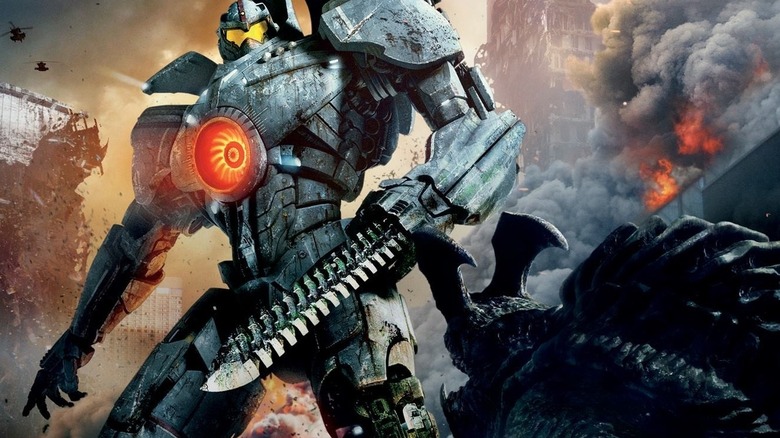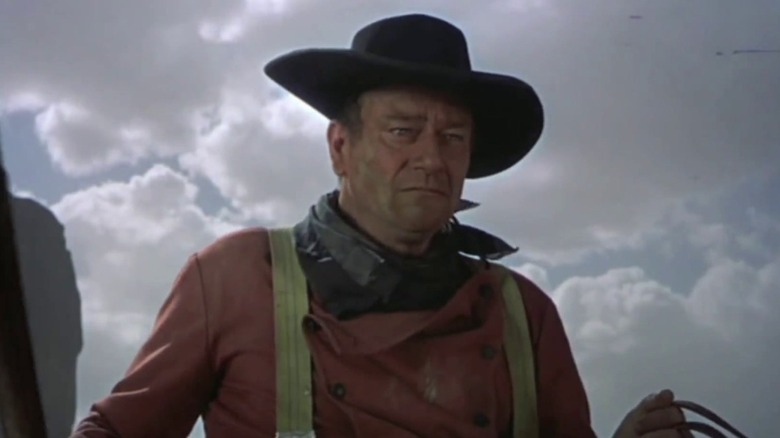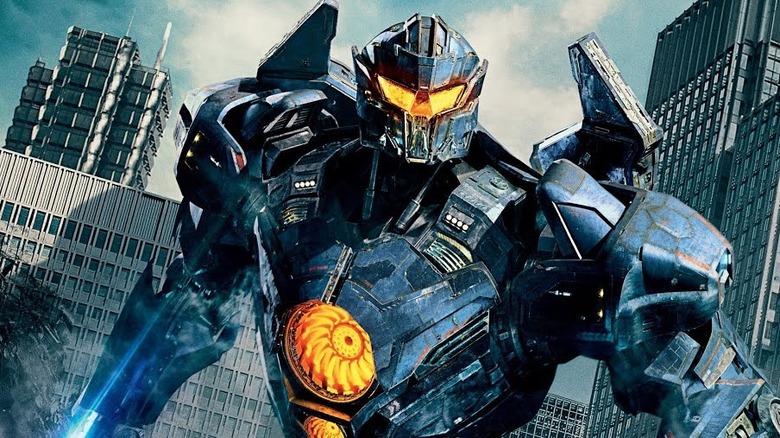How Pacific Rim Paid A Surprising Homage To John Wayne
I don't think I have to tell you how awesome "Pacific Rim" is. It's a movie featuring giant robots punching the crap out of giant monsters — that's an instant recipe for greatness. But what's even more awesome is the thought that was put into shaping the world of the film. From the alternate universe the Kaiju hail from to the "Drift" — the mental bond that all Jaeger pilots share — director Guillermo del Toro managed to craft a universe that feels as rich and lived-in as sci-fi staples like "Star Wars" and "Battlestar Galactica."
That line of thought even extended to the massive metal Jaegers and how they move. In an interview with The New York Daily News, del Toro discussed how he and the "Pacific Rim" design team drew upon various inspirations across the mecha and kaiju genre to shape the various Jaegers and Kaiju that populate the film. This includes the main Jaeger, Gypsy Danger, whose movements are based on one of the most famous actors of all time.
Time to punch some Kaiju, pilgrims
del Toro says that Gypsy Danger's movement was based on John Wayne, as the design team was trying to evoke the feel of a Western gunslinger. The Jaeger's outer appearance was also inspired by various American buildings, including New York City landmarks like the Chrysler Building and Empire State Building. And the work paid off; Danger's movements do feel like a cowboy's, as it strides with a lumbering gait into a raging tsunami or races into battle against a Kaiju. Personally, I find it rather fitting that the American robot moves like Wayne, especially since his filmography is a large part of the reason why cowboys are mythologized as heroic figures.
That same approach was taken with the other Jaegers; they're either modeled on vehicles, real-life people, or a combination of elements. The Russian Jaeger, Cherno Alph,a was built to resemble a combination of nuclear containment silo and T-34 tank, while the sleek Striker Eureka charges into battle with a gait similar to football player Lester Hayes.
Highway to the (Gypsy) Danger zone
The Jaegers' specific movements helps lend weight, both mythic and literal, to "Pacific Rim." Watching the scenes where machine and moonster do battle is awe-inspiring or terrifying, based on who's in range of the camera. The ground shakes with every step they take and each skyscraper-sized punch and kick lands with the force of an earthquake. That sense of motion was lost in the 2018 sequel "Pacific Rim Uprising"; the Jaegers move with far more speed and agility to the point where they're almost weightless. It never looks as impressive as the first film.
Thankfully, the Netflix series "Pacific Rim: The Black" restores that sense of weight, as the training Jaeger Atlas Destroyer is often shown stomping through the ruins of Australia. Showrunners Greg Johnson and Craig Kyle haven't revealed what inspired Atlas' movements, but it's clear that they were seeking to hew fairly close to the first film and that awe/dread combo. And it works.


